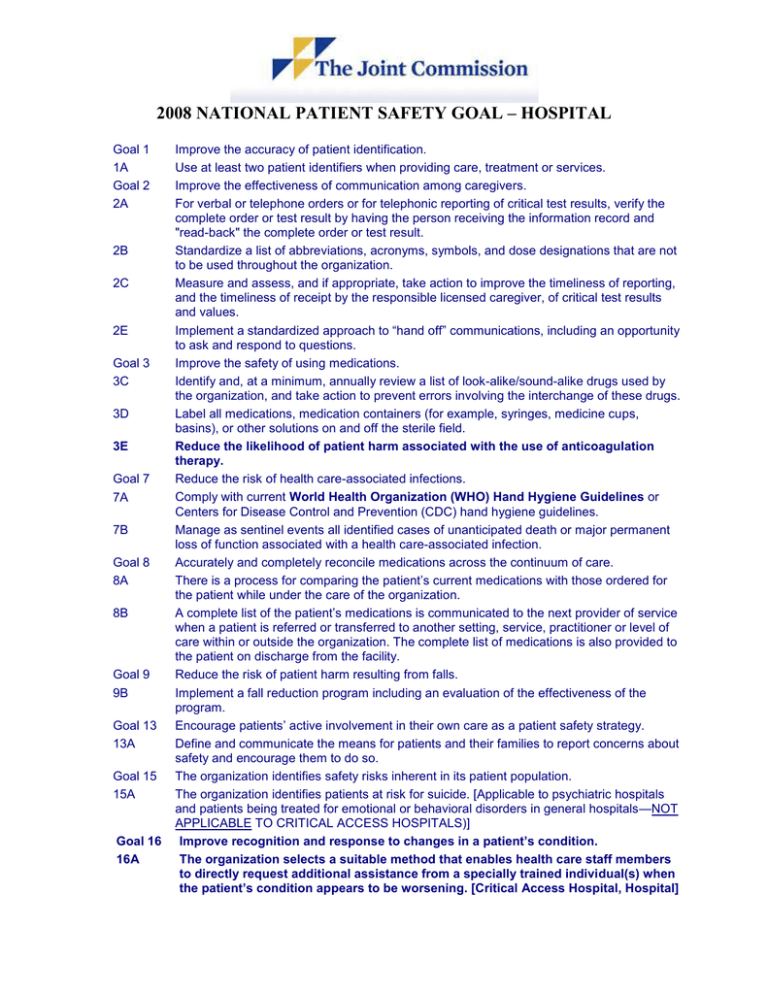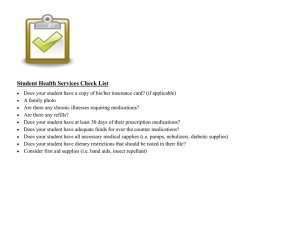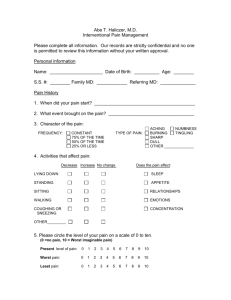2008 National Patient Safety Goals
advertisement

2008 NATIONAL PATIENT SAFETY GOAL – HOSPITAL Goal 1 1A Goal 2 2A 2B 2C 2E Goal 3 3C 3D 3E Goal 7 7A 7B Goal 8 8A 8B Goal 9 9B Goal 13 13A Goal 15 15A Goal 16 16A Improve the accuracy of patient identification. Use at least two patient identifiers when providing care, treatment or services. Improve the effectiveness of communication among caregivers. For verbal or telephone orders or for telephonic reporting of critical test results, verify the complete order or test result by having the person receiving the information record and "read-back" the complete order or test result. Standardize a list of abbreviations, acronyms, symbols, and dose designations that are not to be used throughout the organization. Measure and assess, and if appropriate, take action to improve the timeliness of reporting, and the timeliness of receipt by the responsible licensed caregiver, of critical test results and values. Implement a standardized approach to “hand off” communications, including an opportunity to ask and respond to questions. Improve the safety of using medications. Identify and, at a minimum, annually review a list of look-alike/sound-alike drugs used by the organization, and take action to prevent errors involving the interchange of these drugs. Label all medications, medication containers (for example, syringes, medicine cups, basins), or other solutions on and off the sterile field. Reduce the likelihood of patient harm associated with the use of anticoagulation therapy. Reduce the risk of health care-associated infections. Comply with current World Health Organization (WHO) Hand Hygiene Guidelines or Centers for Disease Control and Prevention (CDC) hand hygiene guidelines. Manage as sentinel events all identified cases of unanticipated death or major permanent loss of function associated with a health care-associated infection. Accurately and completely reconcile medications across the continuum of care. There is a process for comparing the patient’s current medications with those ordered for the patient while under the care of the organization. A complete list of the patient’s medications is communicated to the next provider of service when a patient is referred or transferred to another setting, service, practitioner or level of care within or outside the organization. The complete list of medications is also provided to the patient on discharge from the facility. Reduce the risk of patient harm resulting from falls. Implement a fall reduction program including an evaluation of the effectiveness of the program. Encourage patients’ active involvement in their own care as a patient safety strategy. Define and communicate the means for patients and their families to report concerns about safety and encourage them to do so. The organization identifies safety risks inherent in its patient population. The organization identifies patients at risk for suicide. [Applicable to psychiatric hospitals and patients being treated for emotional or behavioral disorders in general hospitals—NOT APPLICABLE TO CRITICAL ACCESS HOSPITALS)] Improve recognition and response to changes in a patient’s condition. The organization selects a suitable method that enables health care staff members to directly request additional assistance from a specially trained individual(s) when the patient’s condition appears to be worsening. [Critical Access Hospital, Hospital]




